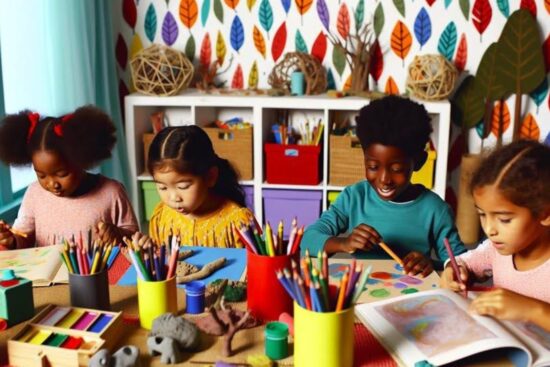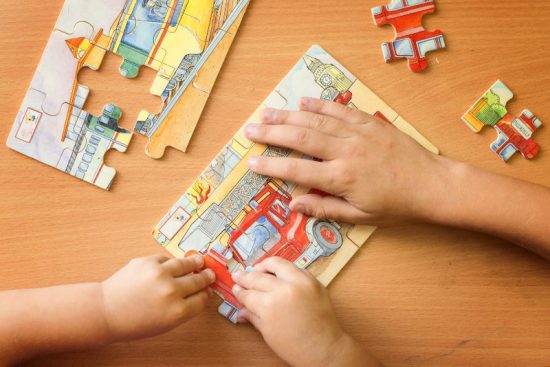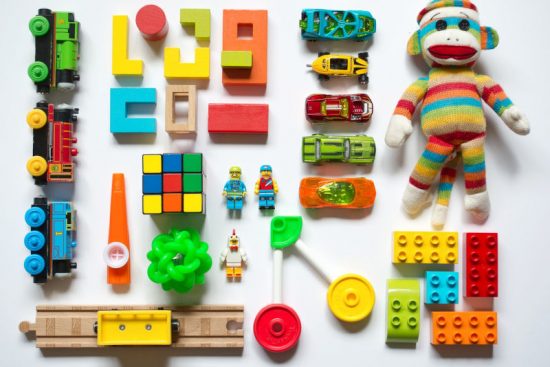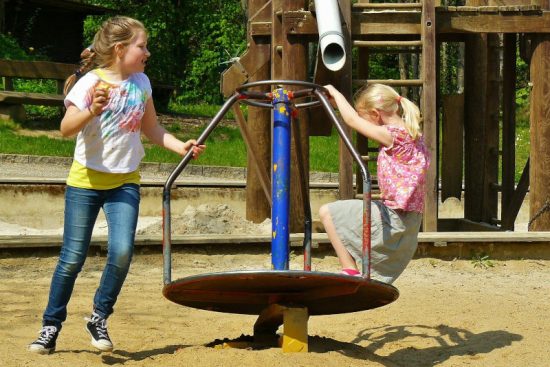
Imagine if every classroom could transform into an arena of exploration, much like Alice’s journey through Wonderland. You’ve probably noticed how traditional teaching methods sometimes fail to captivate today’s students. By incorporating games and activities into your lessons, you can engage students, enhance their understanding, and boost collaboration. But how do you guarantee these methods align with your educational goals and cater to different learning styles? Exploring these questions might reveal innovative strategies to revitalize your teaching approach, and perhaps, redefine what a classroom can truly achieve.
Benefits of Interactive Learning
Imagine a classroom where you’re not just a passive listener but an active participant; that’s the essence of interactive learning. This approach transforms the educational experience, making it dynamic and engaging. By involving you directly in the learning process through games and activities, interactive learning boosts your understanding and retention of information. Instead of merely absorbing facts, you actively apply concepts, which enhances your critical thinking skills.
Interactive learning also fosters collaboration. By working with classmates on group activities, you strengthen your communication and teamwork abilities. This collaborative environment encourages you to share ideas, ask questions, and learn from others’ perspectives. It creates a supportive community where everyone contributes to collective learning.
Moreover, interactive learning can increase your motivation and interest in the subject matter. Games and activities make lessons more enjoyable and break the monotony of traditional lectures. When you’re having fun while learning, you’re more likely to stay engaged and curious. This active involvement helps in making memorable connections with the material, leading to better academic performance.
In short, interactive learning empowers you to take control of your educational journey, making it both effective and enjoyable.
Engaging Different Learning Styles
While every student learns differently, interactive learning with games and activities offers a versatile approach that caters to various learning styles. By incorporating games, you can engage visual, auditory, and kinesthetic learners all at once.
For visual learners, you might use colorful charts or digital simulations that make information more digestible. Games like puzzles and matching activities can help them visualize concepts more clearly.
Auditory learners, on the other hand, benefit from activities that involve discussions or listen-and-repeat exercises. Try incorporating storytelling games or role-playing scenarios where they can verbally express their understanding and engage in meaningful dialogue. This approach leverages their sensitivity to sound and spoken word.
Kinesthetic learners excel when they can move and interact physically with the material. Consider using hands-on activities such as building models or participating in movement-based games. These activities allow them to learn by doing, reinforcing concepts through physical engagement.
For students who thrive in a more independent learning environment, accredited online schools K-12 can offer a flexible and personalized approach to education.
Choosing the Right Tools
As you explore the diverse learning styles of your students, selecting the right tools becomes a pivotal step in enhancing their educational experience. Consider each student’s unique needs and preferences. Some might thrive with digital games that encourage quick thinking, while others prefer hands-on activities that let them explore concepts physically.
Start by identifying the core objectives of your lesson. What skills or knowledge do you want your students to acquire?
Once you’ve defined your goals, research tools that align with them. Look for platforms with a variety of game types, such as quizzes, puzzles, or simulations, ensuring they cater to different learning styles. Check reviews or testimonials from other educators to gauge effectiveness.
Don’t forget accessibility. Consider tools that are easy to navigate and support various devices, ensuring all students can participate equally. Free trials or demos can offer a glimpse into how a tool works in practice.
Lastly, involve your students in the selection process. Their feedback can provide valuable insights into what engages them most. By choosing the right tools, you’ll create a dynamic, interactive learning environment that keeps your students motivated and enthusiastic to learn.
Designing Educational Games
Designing educational games is a creative and rewarding process that allows you to tailor learning experiences to your students’ interests and needs. By engaging them in fun and interactive ways, you can make complex subjects more accessible and enjoyable.
Start by identifying the specific learning objectives you want to address. What concepts do you want your students to grasp? Once that’s clear, think about how you can incorporate those into a game format.
Consider the following elements to make your educational games successful:
- Game Mechanics: Decide on rules and procedures. Will it be a board game, a card game, or a digital game?
- Engagement: Guarantee the game is compelling. Use storytelling or challenges to keep students interested.
- Feedback: Offer immediate feedback. Players should know when they’re getting closer to solving a challenge.
- Adaptability: Create games that can be adjusted for different skill levels or learning styles.
- Collaboration: Encourage teamwork. Design games that require students to work together, fostering communication and cooperation.
Activity-Based Learning Strategies
Educational games are just one of the many tools in your teaching toolkit, and incorporating activity-based learning strategies can further enhance student engagement and understanding. When you integrate hands-on activities, you provide students with opportunities to apply concepts in real-world scenarios, making learning tangible and memorable.
Start by identifying key objectives for your lesson, then think about activities that align with these goals. Whether it’s a science experiment, a role-playing exercise, or a debate, choose activities that challenge students to think critically and creatively.
To guarantee success, encourage collaboration. Group activities foster communication and teamwork, allowing students to learn from each other. Design tasks that require input from everyone, helping them build problem-solving skills together.
Also, rotate roles within groups to give students a chance to develop leadership and negotiation abilities.

Don’t forget to reflect on the activity with your students. After completing an activity, facilitate a discussion or have them write a short reflection on what they learned and how they approached the task. This encourages them to internalize their experiences and understand different perspectives.
Incorporating Technology in Lessons
How can technology transform your classroom into a hub of interactive learning? By integrating digital tools into your lessons, you can create an engaging environment where students feel motivated and inspired.
Technology not only makes learning more dynamic but also caters to various learning styles, ensuring every student finds something that resonates with them.
Consider these strategies to effectively incorporate technology:
- Use Interactive Apps: Apps like Kahoot! and Quizlet make learning fun with quizzes and games that reinforce key concepts.
- Virtual Reality (VR) Experiences: Take students on virtual field trips to explore places they can’t physically visit, making learning more immersive.
- Online Collaborative Tools: Platforms like Google Classroom enable students to access materials, submit assignments, and receive feedback digitally.
- Educational Videos: Incorporate videos from YouTube or educational sites to illustrate complex topics visually and audibly.
- Gamified Learning Platforms: Tools like Prodigy or Duolingo turn subject matter into games, encouraging students to learn while playing.
Encouraging Student Collaboration
Collaboration among students is key to building a dynamic and inclusive classroom environment. When you encourage students to work together, they develop essential skills like communication, problem-solving, and empathy.
To make this happen, incorporate activities that require teamwork and shared responsibility. Think of games where students must rely on each other to succeed, like group puzzles or team-based challenges. These not only make learning fun but also strengthen connections among classmates.
Start by setting clear goals and expectations for group work. Make sure everyone knows their role and the importance of contributing. Foster an atmosphere where students feel comfortable sharing ideas and asking questions.
Encourage them to listen actively and respect different viewpoints. It’s crucial to create a space where all voices are heard and valued.
You can also use technology to enhance collaboration. Tools like online discussion boards, shared documents, and interactive platforms enable students to collaborate outside of class.
This helps them build digital communication skills while working together on projects. By prioritizing student collaboration in your lesson plans, you empower students to learn from one another, build confidence, and prepare for future collaborative environments.
Assessing Learning Through Play
Building on the power of collaboration, you can also evaluate how students learn through play. This approach not only makes assessments more engaging but also provides insights into their understanding and skills.
As you watch students interact with educational games, look for signs of their learning progress. Here’s how you can effectively assess through play:
- Observe engagement: Notice how students participate. Are they excited and actively involved, or do they seem disinterested? Engagement often reflects understanding.
- Monitor teamwork: Pay attention to how well they work in groups. Do they communicate effectively and solve problems together? Collaboration often enhances learning.
- Check comprehension: Listen to their discussions. Are they using relevant vocabulary and concepts correctly? This indicates their grasp of the material.
- Evaluate problem-solving: Challenge them with scenarios. Can they apply what they’ve learned to find solutions? Problem-solving shows depth of understanding.
- Reflect on feedback: After the game, ask for their thoughts. What did they learn, and what was challenging? Their reflections can reveal their learning process.
Overcoming Implementation Challenges
When it comes to integrating games and activities into your learning environment, overcoming implementation challenges can seem intimidating. But don’t worry, with the right approach, you can tackle these obstacles effectively.
Start by identifying your learning objectives. Clearly defined goals will help you choose or design activities that align with your curriculum and enhance student engagement.
Next, consider the resources at your disposal. You might need to adapt or simplify games to fit your classroom size, available materials, and time constraints.
Flexibility is your friend; sometimes, a creative twist on a familiar game can provide a solution that fits your needs perfectly.
You’ll also want to prepare for potential technical issues if digital tools are involved. Test these tools in advance, and have a backup plan ready to keep your lesson on track.
Enhancing Creativity in the Classroom
Fostering a classroom’s creative spirit is essential for nurturing students’ innovative thinking and problem-solving skills. By incorporating games and activities, you can transform your classroom into a vibrant hub of creativity.
Start by encouraging students to think outside the box and explore different perspectives. Here are some ways to enhance creativity:
- Storytelling Games: Use prompts or random words to create stories. Let students collaborate, adding twists and turns as they go.
- Art Projects: Introduce art activities that connect with your lesson. It could be drawing, painting, or digital art that reflects the topic.
- Role-playing: Encourage students to step into characters’ shoes from history or literature, fostering empathy and deeper understanding.
- Brainstorming Sessions: Create a safe space for sharing ideas freely. Use mind maps or sticky notes to visualize thoughts and solutions.
- Problem-Solving Challenges: Present real-world problems and let students devise creative solutions, promoting critical thinking.
Conclusion
You’re on the brink of transforming your classroom into a hub of excitement and discovery. Imagine students enthusiastically diving into lessons, their eyes lighting up with understanding and curiosity. Can you feel the energy shift? By embracing interactive learning with games and activities, you’re not just teaching—you’re inspiring. So, what’s stopping you? Take the leap, explore new tools, and watch as your students’ creativity and collaboration take flight. The future of education is in your hands!
Photo Source: https://www.pexels.com/photo/kids-playing-chess-8466021/




